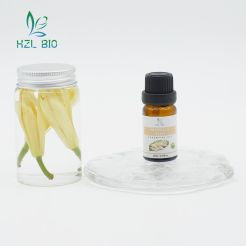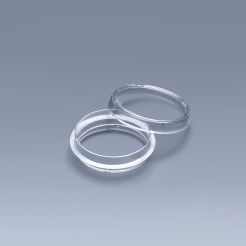PHYSIOLOGICAL FUNCTION
Antioxidant
The important property of astaxanthin lies in its antioxidant properties, as it is an excellent antioxidant. The strong antioxidant activity of astaxanthin is due to its ability to stabilize membrane structure, reduce membrane permeability, and limit the entry of peroxide promoters into cells. Protect important molecules within cells from oxidative damage. Meanwhile, astaxanthin may have the potential to become a pro oxidant inducing oxidative stress. The conjugated double bonds, hydroxyl groups, and unsaturated ketone groups at the end of the conjugated double bond chains in astaxanthin molecules, where hydroxyl and ketone groups form alpha hydroxyketones, all of which have relatively active electronic effects and can provide electrons to free radicals or attract unpaired electrons from free radicals, effectively quenching highly oxidizing singlet reactive oxygen species and other free radicals in the environment. Research has shown that the ability to quench reactive oxygen species increases with the number of conjugated double bonds, and astaxanthin has the strongest quenching ability. Its ability to quench molecular oxygen is higher than that of β - carotene, vitamin E, alpha carotene, lutein, and lycopene with the same structure. Astaxanthin, integrated into the membrane system, inhibits lipid peroxidation by exerting a protective effect on liposomes. It can also protect cells and DNA from oxidative damage, protect intracellular proteins, facilitate effective metabolism, and enable proteins within cells to function better. This antioxidant effect is manifested in prolonging the oxidation time of low density lipoprotein (LDL), thereby reducing the occurrence of atherosclerosis.
In addition, experiments have shown that astaxanthin can increase antioxidant enzyme activity and protein expression. Different doses of astaxanthin significantly increase the protein expression of peroxidase and superoxide dismutase in animal cells, and their biological activity is also significantly improved. These substances all have good antioxidant effects in vivo.
Anticancer effect
The investigation on the relationship between dietary carotenoid intake and incidence rate or mortality of cancer found that the total incidence rate or mortality of cancer was significantly negatively correlated with carotenoid intake. Comparing the anti-tumor activities of various carotenoids, astaxanthin has the strongest effect. The anti-tumor activity of astaxanthin may be related to its intercellular signaling, induction of heterologous metabolic enzymes, and regulation of immune responses related to tumor cells. Research has shown that astaxanthin has the ability to inhibit mutagenic effects caused by aflatoxin B1, benzopyrene (BaP), diethyl nitrite (DEN), nitrosamine, and cyclophosphamide. The preventive effect of astaxanthin on tumors can take effect at different stages of tumor formation. By inhibiting the production of putrescine and reducing the concentration of free polyamines such as spermine and spermidine, the formation of tumor inducers can be reduced; Protect the skin from UV damage through antioxidant effects, prevent skin photoaging, and prevent the induction of skin cancer; By strengthening the connectivity between normal cells and placing cancer induced cells in an extended communication network, normal cells can gain an advantage, isolate cancer cells, reduce the connections between cancer cells, control their growth, and prevent tumor transformation; Astaxanthin also has a strong inhibitory effect on cancer cell proliferation, and high concentrations of astaxanthin can kill tumor cells. Studies have found that astaxanthin can effectively control a variety of cancers, such as liver cancer, oral cancer, colorectal cancer, bladder cancer cancer and breast cancer.
Develop immunity from disease
Astaxanthin can significantly enhance the local and systemic immune capacity of the body. This immune regulatory characteristic, combined with antioxidant properties, plays an important role in preventing the occurrence and spread of diseases. Experiments have shown that carotenoids can slow down the decline in immune function caused by aging, improve the function of immune organs in the body, and enhance resistance to harsh environments. More importantly, astaxanthin can enhance the function of T cells in the body, increase the number of neutrophils and natural killer cells, and participate in the body's cellular immunity; Astaxanthin can also increase the activity of B cells in the immune system, eliminate foreign invading pathogens, and play a role by assisting in the production of antibodies and enhancing the activity of other immune components, such as promoting the production of immunoglobulin, increasing the production of IgG (immunoglobulin G), IgA (immunoglobulin A), and IgM (immunoglobulin M), enhancing humoral immune response ability, and improving animal immunity.
Pigmentation action
Carotenoids are the main pigment substances in aquatic animals, and astaxanthin accounts for the majority of carotenoids in aquatic animals. Therefore, it can be said that astaxanthin is the main pigment substance in aquatic animals. Astaxanthin is the endpoint of carotenoid synthesis. After entering animal bodies, it can be directly stored in tissues without modification or biochemical transformation. It has strong pigment deposition ability, making the skin and muscles of some aquatic animals appear healthy and bright colors, and making poultry eggs and feathers, skin, feet, and necks appear healthy golden or red. Experiments have shown that adding astaxanthin to feed not only turns the surface phosphorus of fish yellow, but also increases the content of astaxanthin in muscle.
APPLICATION
Astaxanthin is fat soluble, with a bright red color and strong antioxidant properties. It has both coloring and preservation effects on foods, especially those with high lipid content. In Japan, patents have been applied for the use of red oil containing astaxanthin for pickling vegetables, seaweed, and fruits, as well as for coloring beverages, noodles, and seasonings. Research has already been conducted abroad on the synthesis of human health products using astaxanthin, focusing on its efficacy in enhancing immune system function, anti-cancer, protecting the retina from UV radiation and photo oxidation, anti-inflammatory, and preventing oxidative damage to low-density lipoprotein (LDL) cholesterol in the blood. astaxanthin containing health products have been developed.
Medical Field
The antioxidant and immunomodulatory effects of astaxanthin can be used as a drug to prevent oxidative tissue damage. Research has shown that astaxanthin can protect the nervous system, especially the brain and spine, by crossing the blood-brain barrier. It can effectively treat central nervous system injuries such as ischemic reperfusion injury, spinal cord injury, Parkinson's syndrome, Alzheimer's syndrome, etc; Effectively preventing retinal oxidation and damage to photoreceptor cells, and improving retinal function, this research achievement has been patented. Research has shown that feeding mice red algae powder rich in astaxanthin can significantly reduce the attachment and infection of Helicobacter pylori to the stomach. Based on this, oral preparations have been developed abroad as anti infective drugs. The antioxidant properties of astaxanthin can also be used to prevent atherosclerosis and related diseases. By reducing or inhibiting the oxidation of low-density lipoprotein (LDL) in the blood, the deposits on the vascular wall are reduced, thus reducing the occurrence of atherosclerosis. Astaxanthin also has the ability to increase high-density lipoprotein (HDL) in the body, so it is used as a preparation to prevent atherosclerosis, coronary heart disease and ischemic brain damage; In addition, astaxanthin can also be used as a common antioxidant, anticancer agent, and treatment for infertility, promoting the development of embryos and sperm.
Feed industry
The largest market for astaxanthin is in the feed industry, as it can be mainly used as a feed additive for fish (salmon, sturgeon, rainbow trout, sea bream, etc.), crustaceans such as shrimp and crabs, and poultry. Astaxanthin, as a coloring agent for aquaculture animals, can give aquatic animals a bright color and enhance their ornamental value; Adding astaxanthin to poultry feed can increase the content of egg yolk pigment in eggs; It can also increase the egg production rate of hens and promote the health of laying hens. Astaxanthin has the same function as humans in preventing and treating diseases in fish, shrimp, crabs, and poultry. It can enhance immunity, increase survival rates, and play an important role in normal growth and healthy farming, as well as improving survival and reproduction rates. Astaxanthin can also enhance the flavor of fish, serving directly as a precursor compound to form the flavor of salmon food, and promoting the conversion of fatty acids or other lipid precursors into salmon flavor compounds.
Cosmetic Field
Astaxanthin, as a new type of cosmetic raw material, is widely used in various cosmetics such as creams, emulsions, lip balms, and skincare products due to its excellent properties. Especially in the field of advanced cosmetics, natural astaxanthin, with its unique molecular structure, can efficiently quench free radicals caused by ultraviolet rays through its antioxidant effect, prevent skin photoaging, reduce the damage of UVA and UVB to the skin, prevent skin cancer, delay cell aging, reduce skin wrinkles, reduce melanin deposition, and reduce freckle production. It can maintain moisture, making the skin more elastic, tense, and moisturized. Japan already has a patent for producing cosmetics using the anti photosensitive effect of astaxanthin.























